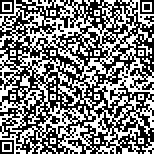下载中心
优秀审稿专家
优秀论文
相关链接
摘要

LiDAR回波强度数据的校正处理可以提升其在地物分类识别方面的利用价值。本文研究发现倾斜地物(如三角形、拱形房顶等)的自身倾角会改变激光反射角进而影响回波强度,而现有归一化校正模型缺乏对地物倾角的计算分析。随后结合LiDAR数据的采集方式和特点,以及倾斜地物的结构特征,提出了一种加入地物倾角计算的改进型归一化校正算法。首先,对激光点的回波强度值进行基于传输距离值的初步校正;然后,以平面距离值、高程、回波强度值差异为参考,判定激光点是否属于同一倾斜地物,若满足条件,则计算出激光点的趋势角,并依据制定的判定规则确定趋势角的正负;最后,将趋势角计算结果与扫描角数值结合计算出对应的反射角,并重新对回波强度值进行计算校正。实验表明,蓝铁皮材质的三角形、拱形房顶的回波强度值范围和均方差缩小,且采集的8种地物样本的回波强度均值的差异性与激光反射率测量结果基本一致,说明该算法能够有效识别具有一定面积且材质均一的倾斜人工地物并计算修正其自身倾角对回波强度带来的影响,从而进一步提高基于回波强度值的地物可分性。
Calibration of Light Detection And Ranging (LiDAR) intensity data can improve classification reliability. The normalized algorithm based on laser transmission distance and scanning angle is the most common algorithm for LiDAR intensity data calibration. However, this study determined that the influence of the tilt angles of several round objects, such as triangular and arched roofs, on echo intensity can be hardly calibrated by the normalized algorithm.Therefore, an optimized algorithm that calculates the tilt angle and calibrates the corresponding influence on LiDAR intensity data was developed.
Eight typical ground objects in the study area were selected and sampled. The laser reflectivity of the samples was measured with Lamada 950 and regarded as a reference to evaluate the intensity calibration results. The steps of the optimized algorithm are as follows:(1) calibrate the original intensity value based on laser transmission distance; (2) determine whether adjacent laser points belong to the same tilted object by comparing their plane distance, elevation, and intensity with cut-off values; (3) calculate the tilt angle when the adjacent laser points belong to the same tilted object; (4) propose a rule by analyzing the LiDAR data collection mode and features of tilted ground objects and use this rule to determine whether the tilt angle is negative or positive; (5) calculate the corresponding reflection angle by summing the tilt angle and absolution of the scanning angle; and (6) recalibrate the intensity based on the reflection angle and laser transmission distance to eliminate the influence of reflection angle.
The differences in the mean intensity of ground objects calculated with the existing normalized algorithm are consistent with the laser reflection measurement results, except for the blue-and-white-painted iron from different roofs. By contrast, the differences in the mean intensity of all eight ground objects are in agreement with the laser reflection measurement results obtained by using the optimized algorithm. For instance, the range and mean-square deviation of the intensity of triangular and arched roofs with blue-painted iron are both reduced. A few unreliable high intensity values correspond to the laser points, such as the wall of buildings and street lamp. Although these points meet the cut-offs, they have a small plane distance value. Thus, the calculated tilt angles for these points are large, and the cosine values are small; this condition results in unreliable high intensity values.
The optimized algorithm can identify the laser points of homogeneous ground objects with a certain area and the same material and calculate the corresponding tilt angles. The influence of tilt angle can be effectively eliminated after calibration based on the reflection angle obtained by summing the tilt and scanning angles. The optimized algorithm can therefore improve classification feasibility based on the intensity value. With regard to the few unreliable high intensity values, two possible solutions are proposed for further study. Given the reliable empirical cut-off values presented by numerous experiments, LiDAR data can be preliminarily classified prior to separate the laser points. The optimized algorithm can then be utilized to calibrate intensity.

